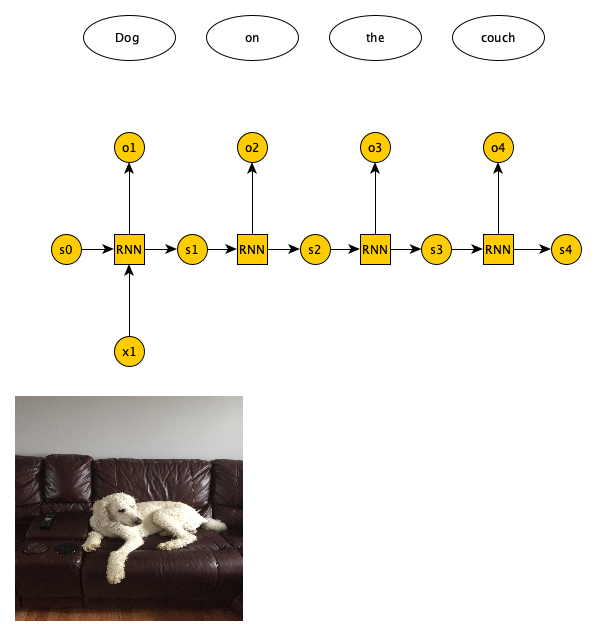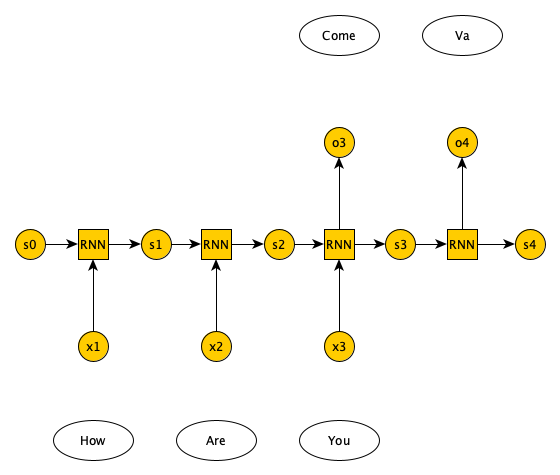Recurrent neural networks (RNN) Deep Learning - Part 2
Contributors
Questions
What is a recurrent neural network (RNN)?
What are some applications of RNN?
Objectives
Understand the difference between feedforward neural networks (FNN) and RNN
Learn various RNN types and architectures
Learn how to create a neural network using Galaxy’s deep learning tools
Solve a sentiment analysis problem on IMDB movie review dataset using RNN in Galaxy
Requirements
- tutorial Hands-on: Introduction to deep learning
- slides Slides: Deep Learning (Part 1) - Feedforward neural networks (FNN)
- tutorial Hands-on: Deep Learning (Part 1) - Feedforward neural networks (FNN)
last_modification Published: May 31, 2021
last_modification Last Updated: May 31, 2021
What is a recurrent neural network (RNN)?
Speaker Notes
What is a recurrent neural network (RNN)?
Recurrent Neural Network (RNN)
- RNN models sequential data (temporal/ordinal)
- In RNN, training example is a sequence, which is presented to RNN one at a time
- E.g., sequence of English words is passed to RNN, one at a time
- And, RNN generates a sequence of Persian words, one at a time
- In RNN, output of network at time t is used as input at time t+1
- RNN applied to image description, machine translation, sentiment analysis, etc.
One-to-many RNN

Many-to-one RNN

Many-to-many RNN

RNN architectures
- Vanilla RNN
- Suffers from vanishing gradient problem
- LSTM and GRU
- Uses gates to avoid vanishing gradient problem
Sentiment analysis
- We perform sentiment analysis on IMDB movie reviews dataset
- Train RNN on training dataset (25000 positive/negative movie reviews)
- Test RNN on test set (25000 positive/negative movie reviews)
- Training and test sets have no overlap
- Since dealing with text data, good to review mechanisms for representing text data
Text preprocessing
- Tokenize a document, i.e., break it down into words
- Remove punctuations, URLs, and stop words (‘a’, ‘of’, ‘the’, etc.)
- Normalize the text, e.g., replace ‘brb’ with ‘Be right back’, etc
- Run the spell checker to fix typos
- Make all words lowercase
Text preprocessing
- Perform stemming/lemmatization
- If we have words like ‘organizer’, ‘organize’, and ‘organized’
- Want to reduce all of them to a single word
- Stemming cuts end of these words for a single root
- E.g., ‘organiz’. May not be an actual word
- Lemmatization reduces to a root that is actually a word
- E.g., ‘organize’
- If we have words like ‘organizer’, ‘organize’, and ‘organized’
Bag of words (BoW)
- If you don’t care about the order of the words in a document
- 2D array. Rows represent documents. Columns represent words in vocabulary
- All unique words in all documents
- If a word not present in a document, we have a zero at row and column entry
- If a word is present in a document, we have a one at row and colum entry
- Or, we could use the word count or frequency
Bag of words (BoW)
- Document 1: Magic passed the basketball to Kareem
- Document 2: Lebron stole the basketball from Curry

- BoW is simple, but does not consider rarity of words across documents
- Important for document classification
Term frequency inverse document frequency (TF-IDF)
- If you don’t care about the order of the words in a document
- Similar to BoW, we have an entry for each document-word pair
- Entry is product of
- Term frequency, frequency of a word in a document, and
- Inverse document frequency, total number of documents divided by number of documents that have word
- Usually use logarithm of the IDF
- TF-IDF takes into account rarity of a word across documents
One-hot encoding (OHE)
- Technique to convert categorical variables such as words into a vector
- Suppose our vocabulary has 3 words: orange, apple, banana
- Each word is represented by a vector of size 3

- OHE problems
- For very large vocabulary sizes requires tremendous amount of storage
- Also, no concept of word similarity
Word2Vec
- Each word represented as an n dimensional vector
- n much smaller than vocabulary size
- Words that have similar meanings are close in vector space
- Words considered similar if they co-occur often in documents
- Two Word2Vec architectures
- Continuous BoW
- predicts probability of a word given the surrounding words
- Continuous skip-gram
- given a word predicts probability of the surrounding words
- Continuous BoW
Sentiment analysis
- Sentiment classification of IMDB movie reviews with RNN
- Train RNN using IMDB movie reviews
- Goal is to learn a model such that given a review we predict whether review is positive/negative
- We evaluate the trained RNN on test dataset and plot confusion matrix
For references, please see tutorial’s References section
Thank you!
This material is the result of a collaborative work. Thanks to the Galaxy Training Network and all the contributors! Tutorial Content is licensed under
Creative Commons Attribution 4.0 International License.
Tutorial Content is licensed under
Creative Commons Attribution 4.0 International License.